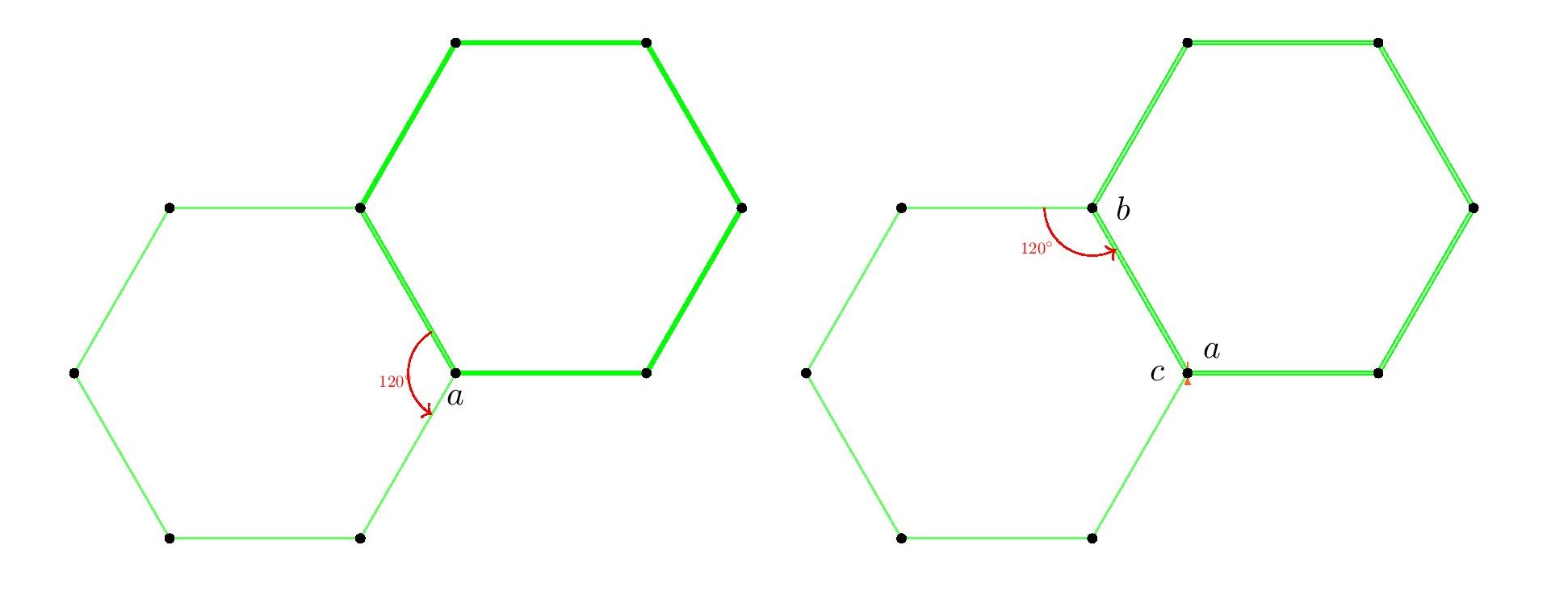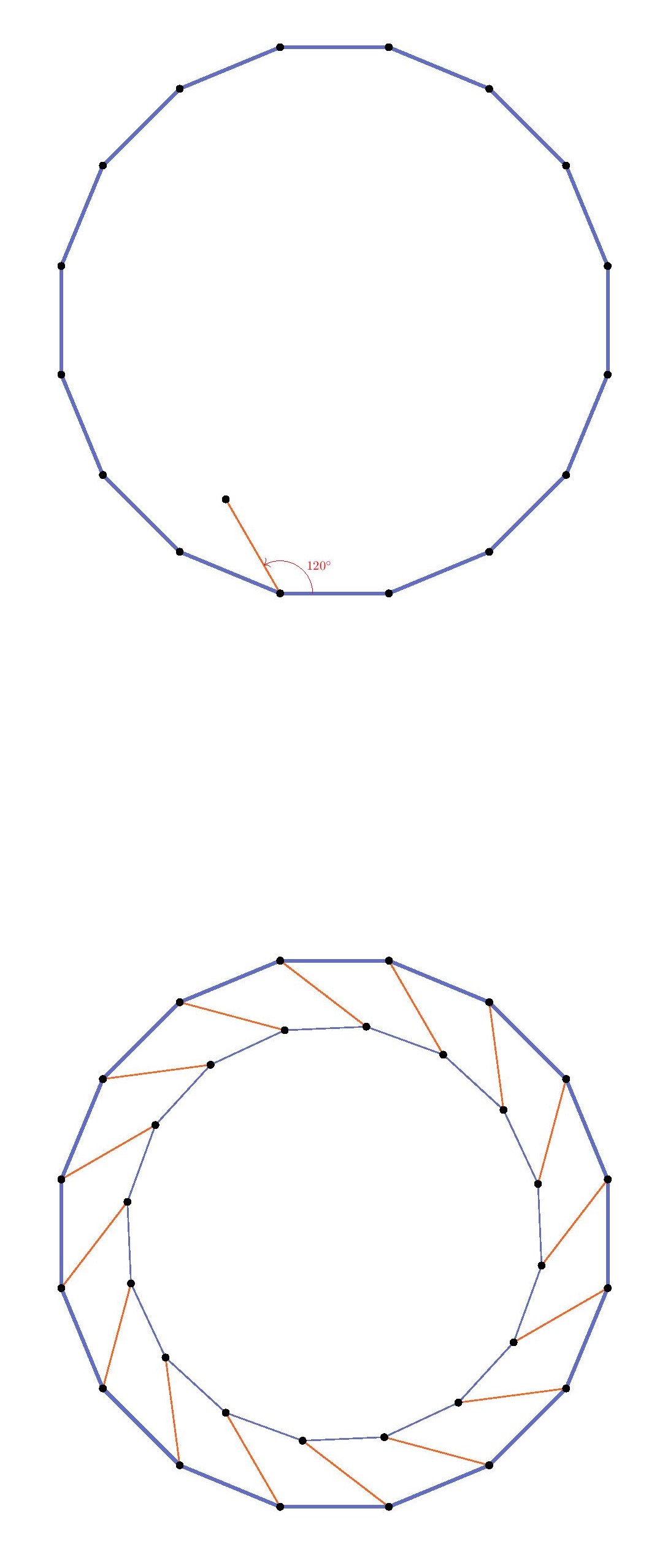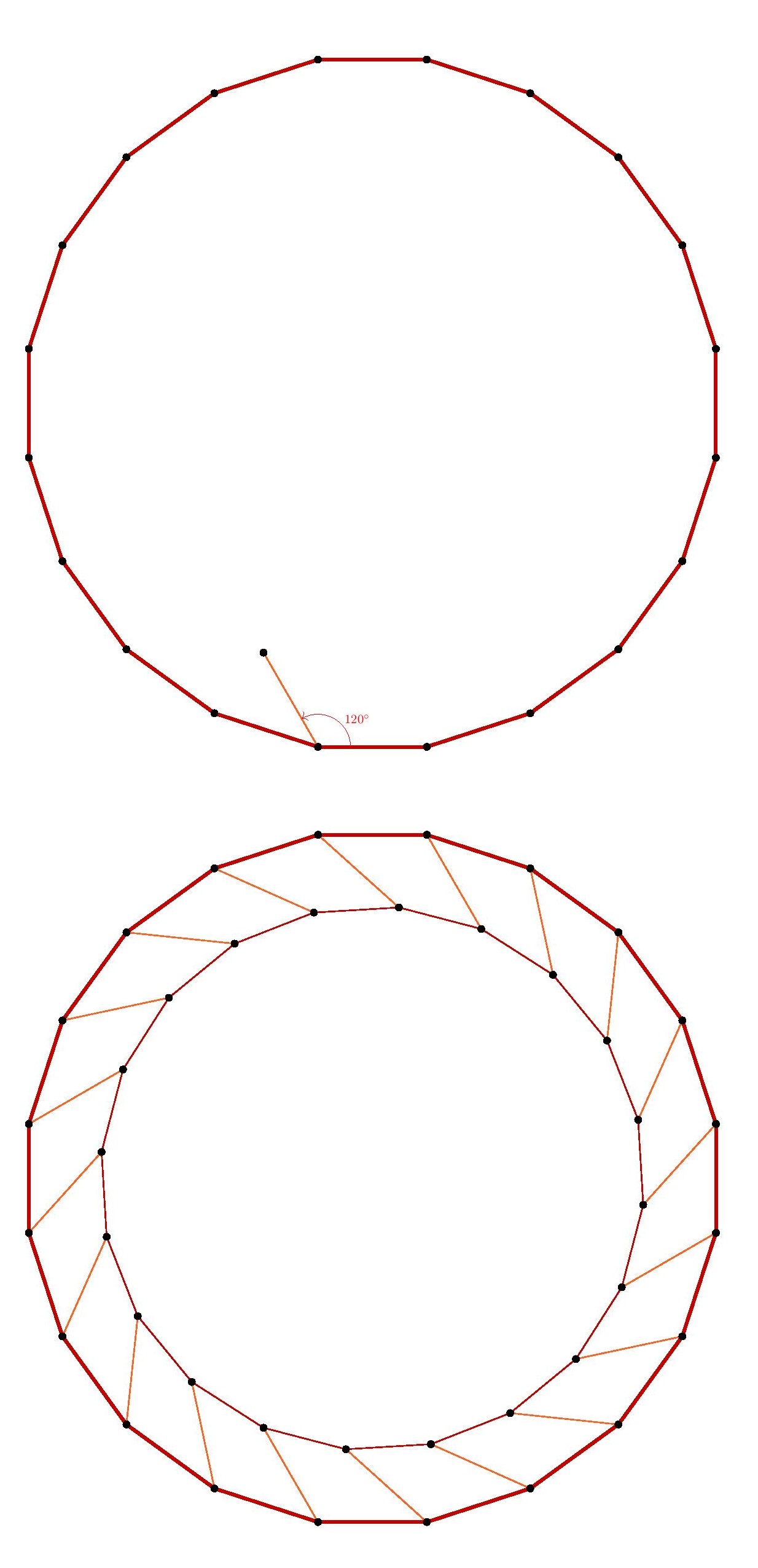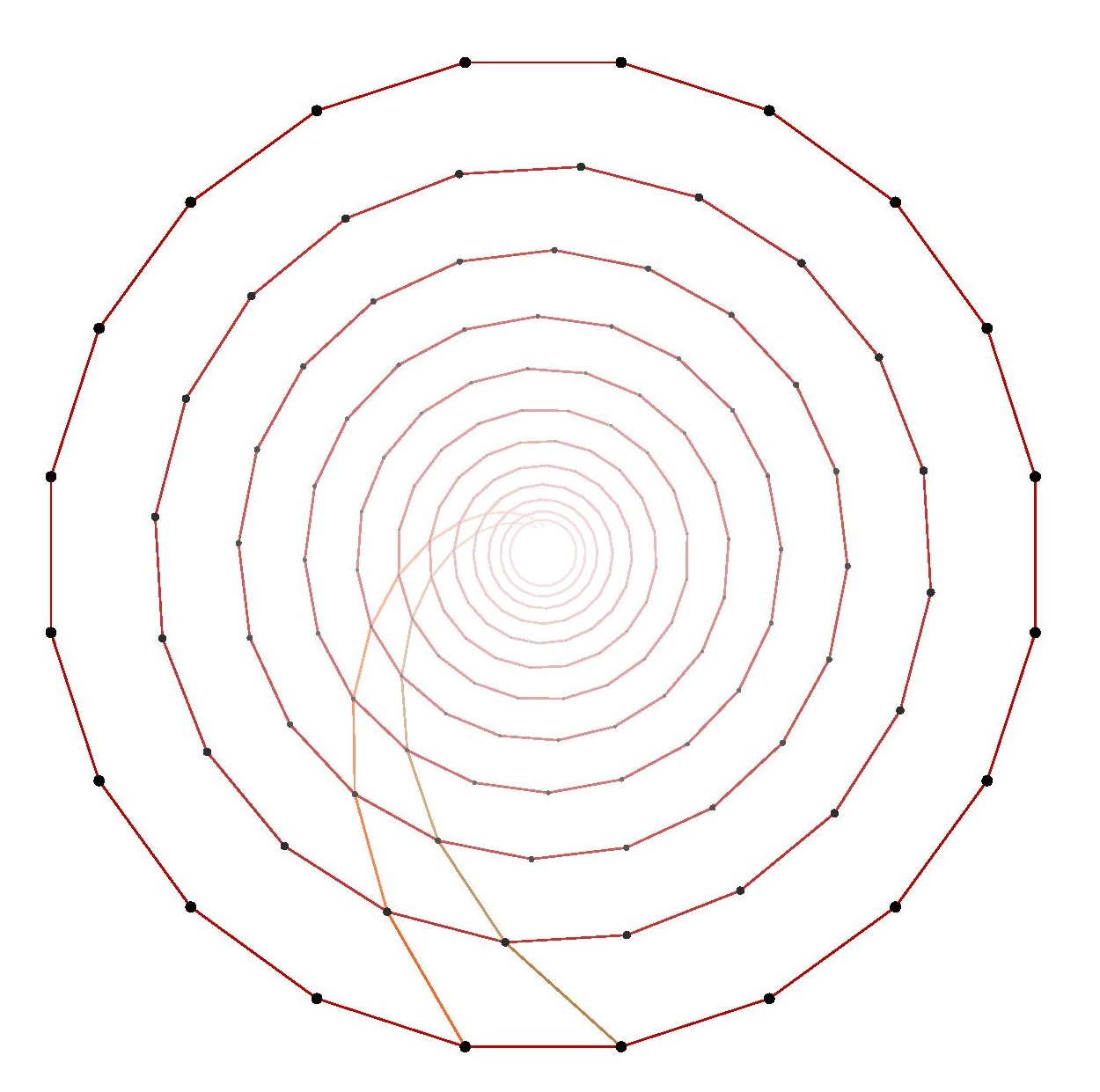I should like to follow up my post last week about the impossibility of finding regular polygons in the integer lattice. This time, however, we shall consider the hexagonal and triangular lattices. It is easy to find lattice points that form the vertices of an equilateral triangle or a regular hexagon.
And similarly, such figures can be found also in the triangular lattice.

 Indeed, the triangular and hexagonal lattices are each refinements of the other, so they will allow exactly the same shapes arising from lattice points.
Indeed, the triangular and hexagonal lattices are each refinements of the other, so they will allow exactly the same shapes arising from lattice points.
But can you find a square? How about an octagon?
Question. Which regular polygons can be formed by vertices of the hexagonal or triangular lattices?
The answer is that in fact there are no other types of regular polygons to be found! I’d like to prove this by means of some elementary classical reasoning.
Theorem. The only non-degenerate regular polygons that arise from vertices in the hexagonal or triangular lattices are the equilateral triangles and regular hexagons.
This theorem extends the analysis I gave in my post last week for the integer lattice, showing that there are no regular polygons in the integer lattice, except squares.
Proof. The argument for the hexagonal and triangular lattices uses a similar idea as with the integer lattice, but there is a little issue with the square and pentagon case. We can handle both the hexagonal and triangular lattices at the same time. The crucial fact is that both of these lattices are invariant by
To get started, suppose that we can find a square in the hexagonal lattice.  We may rotate this square by
We may rotate this square by
The same construction works with pentagons. 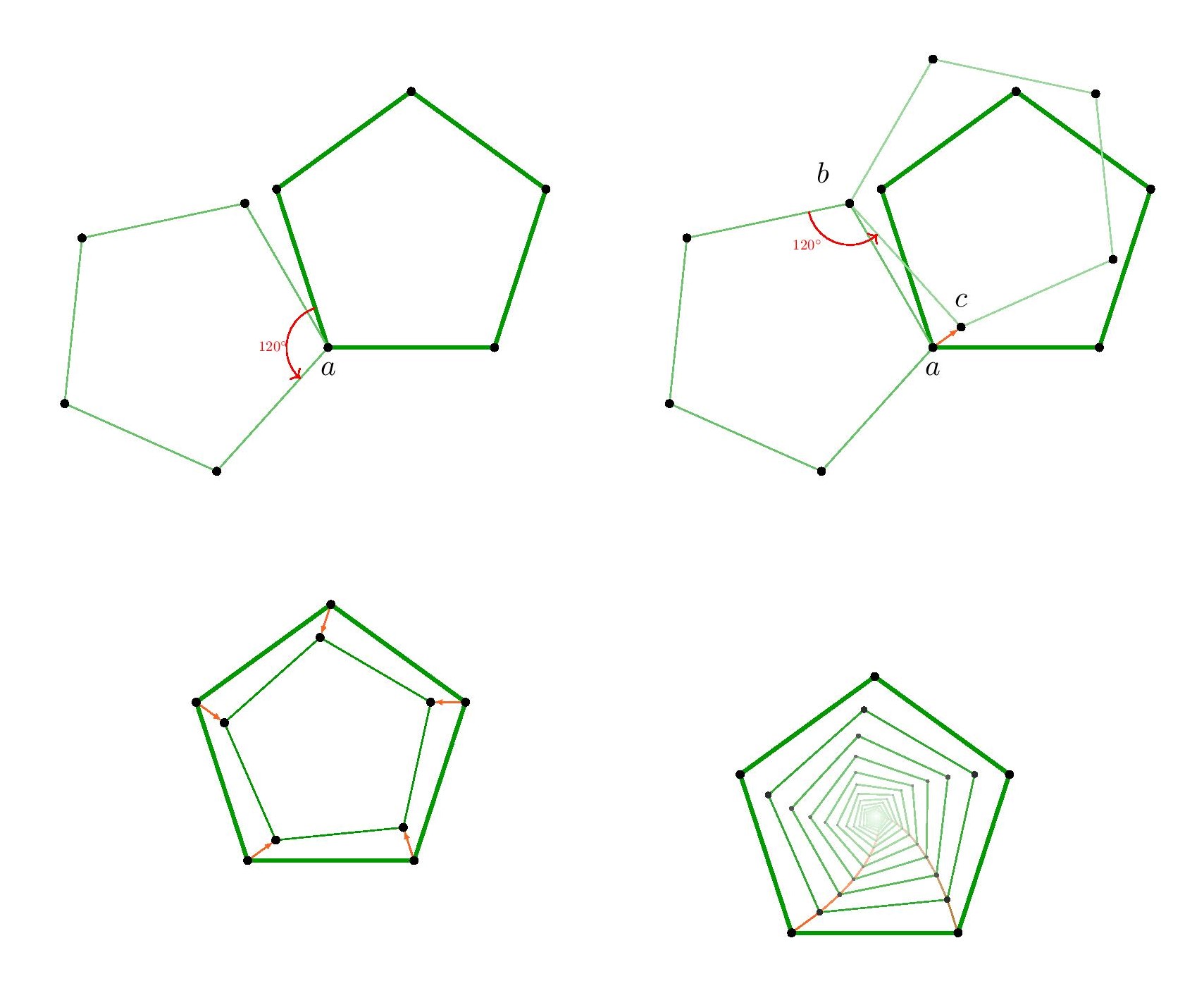
If there is a pentagon in the lattice, then we may rotate it about point
If we attempt to apply this argument with triangles or hexagons, then the process simply leads back again to points in the original figure. But of course, since triangles and hexagons do arise in these grids, we didn’t expect the construction to work with them.
But also, this particular two-step rotation construction does not succeed with the heptagon (7-sides) or larger polygons, since the resulting point
Fortunately, for the 7-gon and higher, we may fall back on the essential idea used in the square lattice case. Namely, because the interior angles of these polygons are now larger than
In summary, in every case of a regular polygon except the equilateral triangle and the regular hexagon, we found that by means of
See my earlier post: there are no regular polygons in the integer lattice, except squares.



